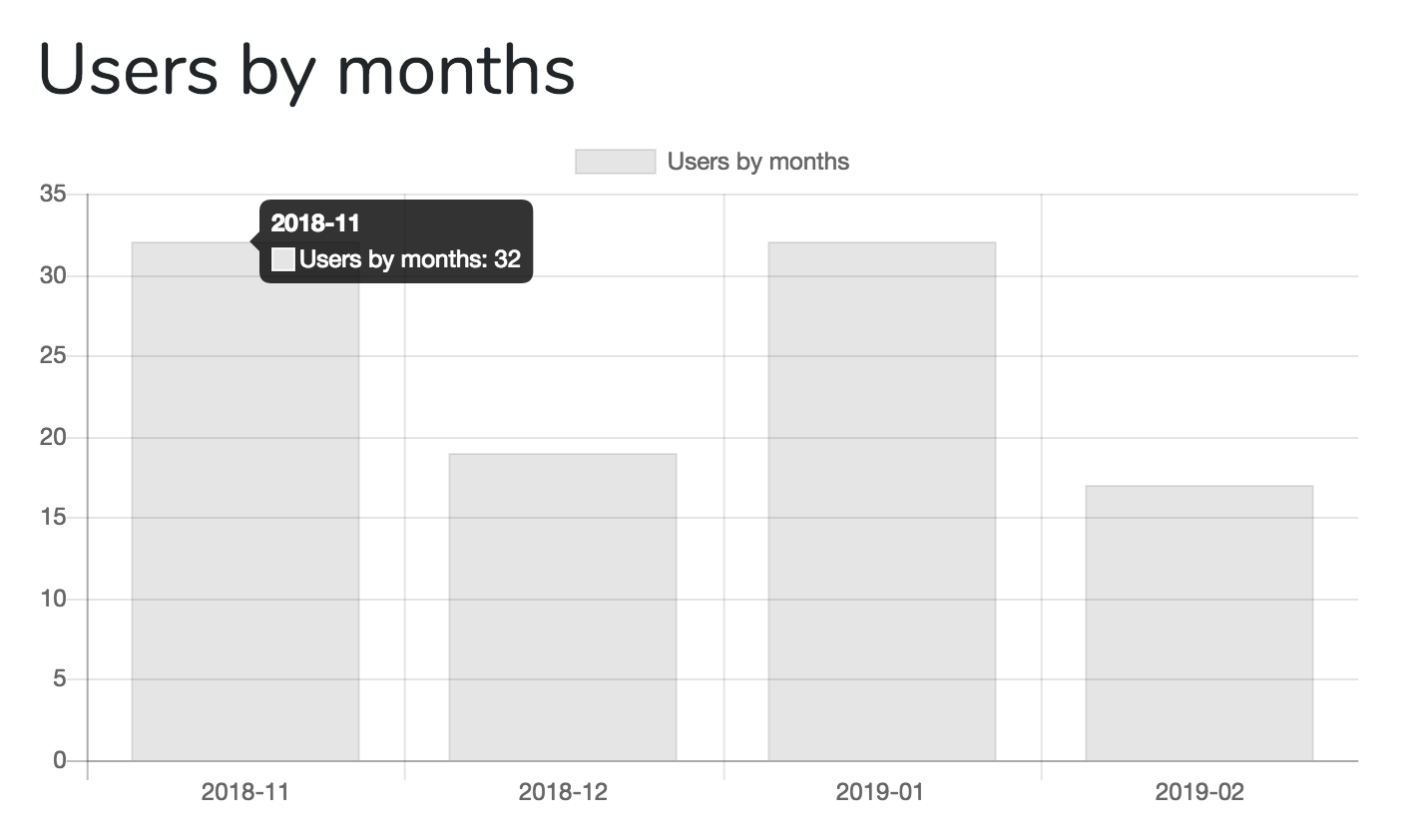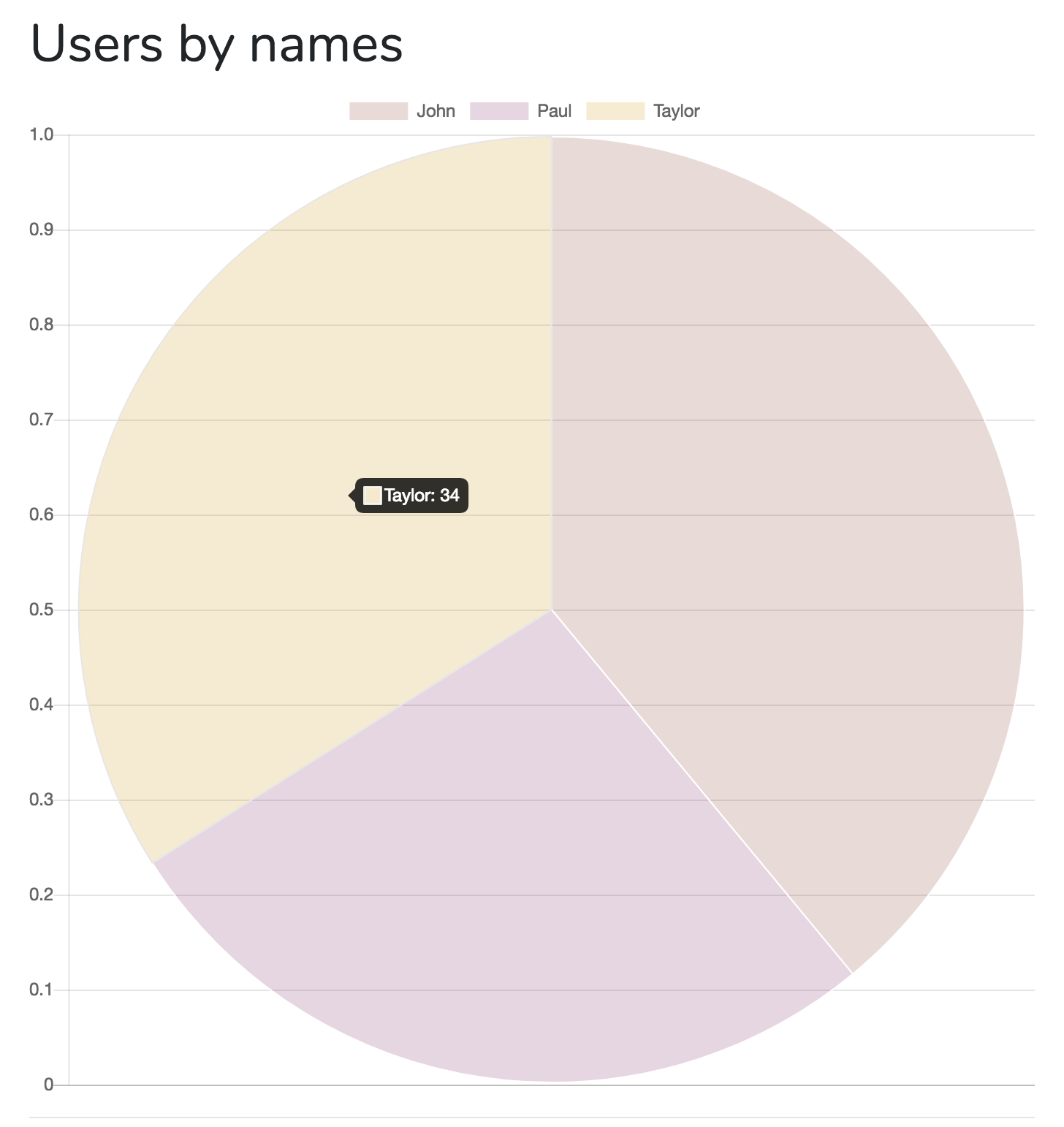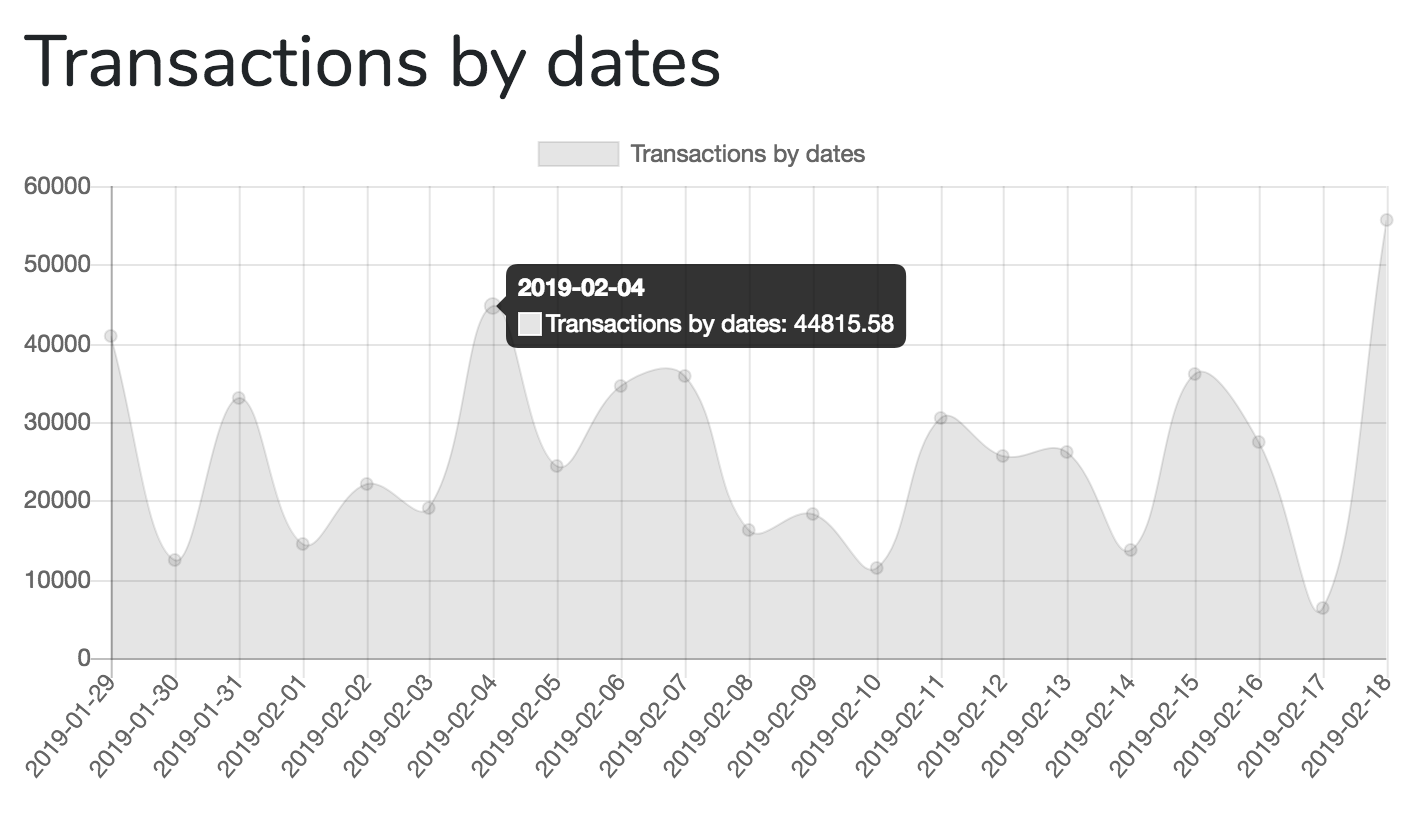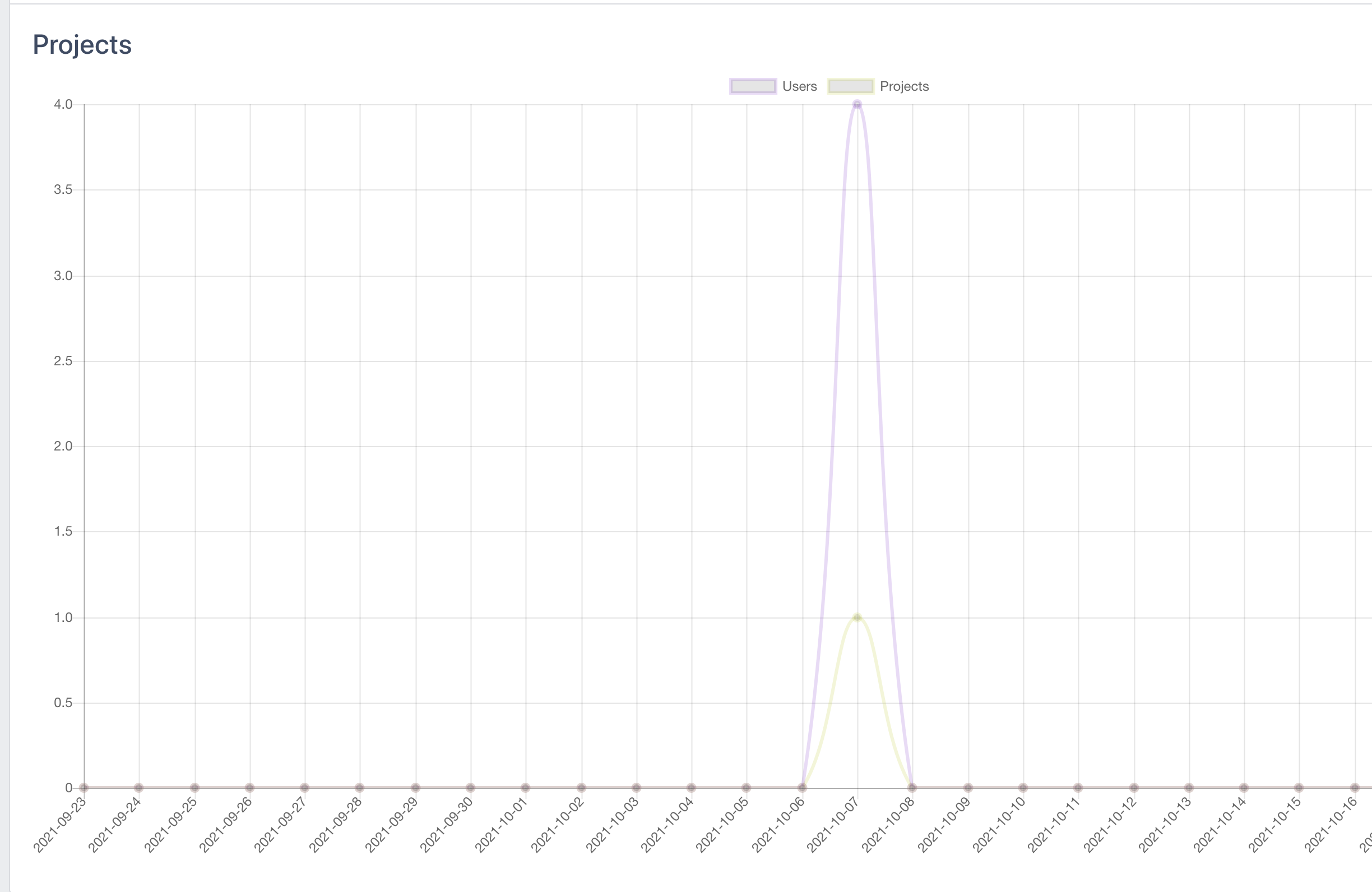Laravel Charts
Package to generate Chart.js charts directly from Laravel/Blade, without interacting with JavaScript.
Simple Usage
If you want to generate a chart above, grouping users records by the month of created_at value, here's the code.
Controller:
use LaravelDaily\LaravelCharts\Classes\LaravelChart;
// ...
$chart_options = [
'chart_title' => 'Users by months',
'report_type' => 'group_by_date',
'model' => 'App\Models\User',
'group_by_field' => 'created_at',
'group_by_period' => 'month',
'chart_type' => 'bar',
];
$chart1 = new LaravelChart($chart_options);
return view('home', compact('chart1'));View File
@extends('layouts.app')
@section('content')
<div class="container">
<div class="row justify-content-center">
<div class="col-md-8">
<div class="card">
<div class="card-header">Dashboard</div>
<div class="card-body">
<h1>{{ $chart1->options['chart_title'] }}</h1>
{!! $chart1->renderHtml() !!}
</div>
</div>
</div>
</div>
</div>
@endsection
@section('javascript')
{!! $chart1->renderChartJsLibrary() !!}
{!! $chart1->renderJs() !!}
@endsection
Installation
composer require laraveldaily/laravel-chartsNo additional configuration or other parameters yet.
Usage
You need to create LaravelChart object in your Controller, passing array of options.
$chart = new LaravelChart($options);Then pass it to the View, as a variable:
return view('dashboard', compact('chart'));Available Reports and Options
Currently package support three types of charts/reports:
group_by_date- amount of records from the same table, grouped by time period - day/week/month/year;group_by_string- amount of records from the same table, grouped by any string field, likename;group_by_relationship- amount of records from the same table, grouped bybelongsTorelationship's field
NOTE: From Laravel 8, all its models are placed in a folder called Models (App\Models)
Example with all options
$chart_options = [
'chart_title' => 'Transactions by dates',
'chart_type' => 'line',
'report_type' => 'group_by_date',
'model' => 'App\Models\Transaction',
'conditions' => [
['name' => 'Food', 'condition' => 'category_id = 1', 'color' => 'black', 'fill' => true],
['name' => 'Transport', 'condition' => 'category_id = 2', 'color' => 'blue', 'fill' => true],
],
'group_by_field' => 'transaction_date',
'group_by_period' => 'day',
'aggregate_function' => 'sum',
'aggregate_field' => 'amount',
'aggregate_transform' => function($value) {
return round($value / 100, 2);
},
'filter_field' => 'transaction_date',
'filter_days' => 30, // show only transactions for last 30 days
'filter_period' => 'week', // show only transactions for this week
'continuous_time' => true, // show continuous timeline including dates without data
];chart_title(required) - just a text title that will be shown as legend;chart_type(required) - possible values: "line", "bar", "pie";report_type(required) - see above, can begroup_by_date,group_by_stringorgroup_by_relationship;model(required) - name of Eloquent model, where to take the data from;name(optional) - just a text title that will be shown as title, otherwise the legend is used;conditions(optional, only forlinechart type) - array of conditions (name + raw condition + color) for multiple datasets;group_by_field(required) - name of database field that will be used ingroup_byclause;group_by_period(optional, only forgroup_by_datereport type) - possible values are "day", "week", "month", "year";relationship_name(optional, only forgroup_by_relationshipreport type) - the name of model's method that containsbelongsTorelationship.aggregate_function(optional) - you can view not only amount of records, but also theirSUM()orAVG(). Possible values: "count" (default), "avg", "sum".aggregate_field(optional) - seeaggregate_functionabove, the name of the field to use inSUM()orAVG()functions. Irrelevant forCOUNT().aggregate_transform(optional) - callback function for additional transformation of aggregate numberfilter_field(optional) - show only data filtered by that datetime field (see below)filter_days(optional) - seefilter_fieldabove - show only lastfilter_daysdays of that field. Example, last 30 days bycreated_atfield.filter_period(optional) - another way to filter by field, show only record from last week / month / year. Possible values are "week", "month", "year".continuous_time(optional) - show all dates on chart, including dates without data.show_blank_data(optional) - show date even if the data is blank based onfilter_days.range_date_start(optional) - show data in from a date range byfilter_field, this is the start date.range_date_end(optional) - show data in from a date range byfilter_field, this is the end date.field_distinct(optional) - field name required, it will apply a distinct(fieldname)style_class(optional) - add class css in canvasdate_format(optional) - add the date format, by default: American format Y-m-dwhere_raw(optional) - Condition in multiple consultation situationschart_height(optional) - add the height in options, default 300pxdate_format_filter_days(optional) - add the date format for Filter dayswithoutGlobalScopes(optional) - removes global scope restriction from queried modelwith_trashed(optional) - includes soft deleted modelsonly_trashed(optional) - only displays soft deleted modelstop_results(optional, integer) - limit number of results shown, see Issue #49chart_color(optional, value in rgba, like "0,255,255") - defines the color of the chart
Example with relationship
$chart_options = [
'chart_title' => 'Transactions by user',
'chart_type' => 'line',
'report_type' => 'group_by_relationship',
'model' => 'App\Models\Transaction',
'relationship_name' => 'user', // represents function user() on Transaction model
'group_by_field' => 'name', // users.name
'aggregate_function' => 'sum',
'aggregate_field' => 'amount',
'filter_field' => 'transaction_date',
'filter_days' => 30, // show only transactions for last 30 days
'filter_period' => 'week', // show only transactions for this week
];Rendering Charts in Blade
After you passed $chart variable, into Blade, you can render it, by doing three actions:
Action 1. Render HTML.
Wherever in your Blade, call this:
{!! $chart1->renderHtml() !!}It will generate something like this:
<canvas id="myChart"></canvas>Action 2. Render JavaScript Library
Package is using Chart.js library, so we need to initialize it somewhere in scripts section:
{!! $chart1->renderChartJsLibrary() !!}It will generate something like this:
<script src="https://cdnjs.cloudflare.com/ajax/libs/Chart.js/2.5.0/Chart.min.js"></script>Action 3. Render JavaScript of Specific Chart
After Chart.js is loaded, launch this:
{!! $chart1->renderJs() !!}Using Multiple Charts
You can show multiple charts on the same page, initialize them separately.
Controller:
public function index()
{
$chart_options = [
'chart_title' => 'Users by months',
'report_type' => 'group_by_date',
'model' => 'App\Models\User',
'group_by_field' => 'created_at',
'group_by_period' => 'month',
'chart_type' => 'bar',
'filter_field' => 'created_at',
'filter_days' => 30, // show only last 30 days
];
$chart1 = new LaravelChart($chart_options);
$chart_options = [
'chart_title' => 'Users by names',
'report_type' => 'group_by_string',
'model' => 'App\Models\User',
'group_by_field' => 'name',
'chart_type' => 'pie',
'filter_field' => 'created_at',
'filter_period' => 'month', // show users only registered this month
];
$chart2 = new LaravelChart($chart_options);
$chart_options = [
'chart_title' => 'Transactions by dates',
'report_type' => 'group_by_date',
'model' => 'App\Models\Transaction',
'group_by_field' => 'transaction_date',
'group_by_period' => 'day',
'aggregate_function' => 'sum',
'aggregate_field' => 'amount',
'chart_type' => 'line',
];
$chart3 = new LaravelChart($chart_options);
return view('home', compact('chart1', 'chart2', 'chart3'));
}View:
@extends('layouts.app')
@section('content')
<div class="container">
<div class="row justify-content-center">
<div class="col-md-8">
<div class="card">
<div class="card-header">Dashboard</div>
<div class="card-body">
<h1>{{ $chart1->options['chart_title'] }}</h1>
{!! $chart1->renderHtml() !!}
<hr />
<h1>{{ $chart2->options['chart_title'] }}</h1>
{!! $chart2->renderHtml() !!}
<hr />
<h1>{{ $chart3->options['chart_title'] }}</h1>
{!! $chart3->renderHtml() !!}
</div>
</div>
</div>
</div>
</div>
@endsection
@section('javascript')
{!! $chart1->renderChartJsLibrary() !!}
{!! $chart1->renderJs() !!}
{!! $chart2->renderJs() !!}
{!! $chart3->renderJs() !!}
@endsectionMultiple Datasets
This is a new feature from v0.1.27. You can provide multiple arrays of settings to the LaravelChart constructor, and they will be drawn on the same chart.
$settings1 = [
'chart_title' => 'Users',
'chart_type' => 'line',
'report_type' => 'group_by_date',
'model' => 'App\Models\User',
'group_by_field' => 'created_at',
'group_by_period' => 'day',
'aggregate_function' => 'count',
'filter_field' => 'created_at',
'filter_days' => '30',
'group_by_field_format' => 'Y-m-d H:i:s',
'column_class' => 'col-md-12',
'entries_number' => '5',
'translation_key' => 'user',
'continuous_time' => true,
];
$settings2 = [
'chart_title' => 'Projects',
'chart_type' => 'line',
'report_type' => 'group_by_date',
'model' => 'App\Models\Project',
// ... other values identical to $settings1
];
$chart1 = new LaravelChart($settings1, $settings2);License
The MIT License (MIT). Please see License File for more information.
More from our LaravelDaily Team
- Check out our adminpanel generator QuickAdminPanel
- Read our Blog with Laravel Tutorials
- FREE E-book: 50 Laravel Quick Tips (and counting)
- Subscribe to our YouTube channel Laravel Business
- Enroll in our Laravel Online Courses




